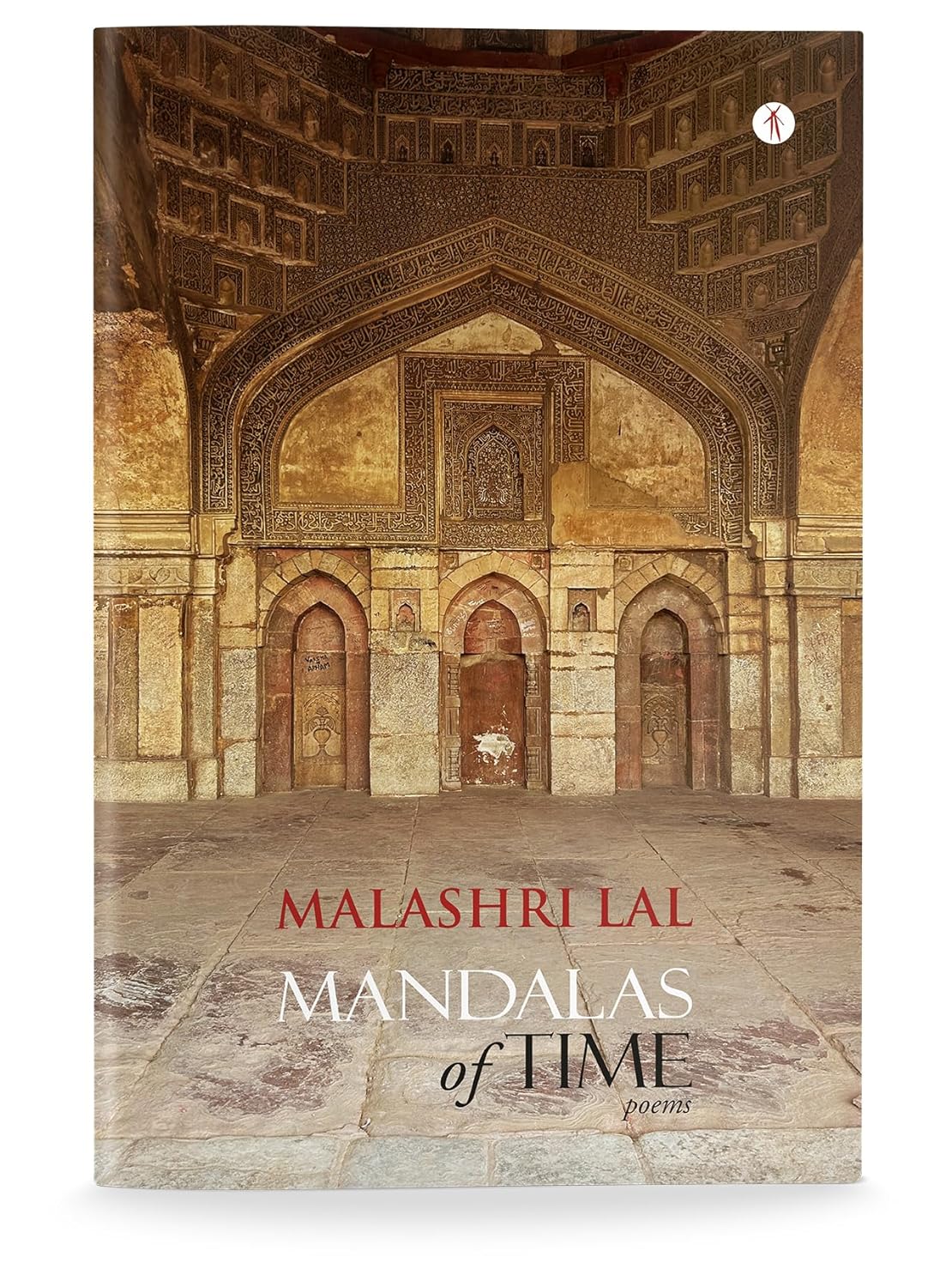Malashri Lal’s “Mandalas of Time” Poems herald tranquility, concentration , divine joy and drive away the negativity when one gets immersed in her poesies. The poems strive to bring a balance between the cosmopolitan and the mythological characters Sita, Radha, Manthra, all having a topical relevance as they embody the present traits of womanhood. They are impactful dynamic and assertive. This book is an author’s search for unity and completeness of spiritual journey from outside to life within. The title Mandalas and the very first poem (Ardhanareesvara) exemplify the set of shared beliefs, ideas and moral attitudes which operate as a unifying force within society and representing a shared understanding of social norms. The poems are cathartic, perspicacious and evocative with a healing touch. They embody the influences of folk epics, Bengali literature and culture of Vishva Bharti, Jaipur, Delhi, Calcutta plus the eastern and western strands.
Her love for nature may not be typically Wordsworth-ian but Tagore-an and is replete with minute details and insight. Her deep delving observation transports us to the realm of flora. ‘Amaltas in Summer’ thriving in intense heat juxtaposed with the sun scorched humanity is beautifully delineated. ‘Another New Year’ The pilkhan tree is witness to the activities of young and old and passing year. ‘Autumn’ is ageing but the mind doesn’t age; humanity dwindles in contradictory phases.
The vain ‘Bougainvillea’ exerting its invincible reign over Chameli and Harsingar and outshining the rest. The wintery cluster of ‘Impatience’ stand for togetherness contrasting with the aloneness of friendless people. In ‘Summer Tricks’ the mango florets, Dahlias and gulmohar leaves impel the poet to visualise vignettes of seemingly forgotten visages.The tender dropping of pink Carnations’ ‘petals’ signify dark eternity. ‘Hibiscus and the Old Champa’ hobnobbing to share an interesting dialogue.The last poem ‘Easter Lilies in an Empty House’ where Lilies jostle, squabble and are scarred but send a lesson of rejuvenation. One can hear the sonorous melodies of Sonajhuri and Acasia in the midst of the bedlam of city in the poem ‘Song of the forest’.
Certain short poems like ‘Blue Haze’
“In the blue haze of anaesthesia
I found your cool palm
Soothing my forehead
I looked beyond for a face
And saw nothing
Or Everything”
‘Radha’s Flute’
Krishna flung the flute
// //
Never sing again
Loveless ownerless, Godless.
‘Counting’
An Adult’s Abacus
// //
Marking the passage of minutes
Each endlessly long.
Linger long in our memory.
Mythological poems like’Rani Padmini today’, ‘Sita’sPankha’, ‘Sita’s Rasoi’, ‘Sita and the Pandemic’, ‘Shila Devi of Amber’, and ‘Hawan Mahal’ are all weaved in rhythm and rhyme in a distinct innovative style.
Some poems like ‘Family Portrait’,
‘Prayer For a Granddaughter’ and ‘sister’ ‘Dreaming of Ma by the sea’ mention endearingly of filial ties.
Certain happenings in life like gems chiselled and polished like humanity bears the brunt of sorrows and joy in ‘Jaipur Bazaar’
‘Crushed’ narrates the story of a cloistered maiden and ‘Escape’ is about a housewife bogged down by the toxicity and the controlling powers.
The book has poems of varied nature laced with similes, metaphors, oxymorons, epithets and images. Prof.Lal doesn’t fail to offer her homage to Tagore, Dalai Lama, Gandhi, Gulzar and Maharani Gayatri Devi either.
“Mandalas of time” is an interesting and a knowledgeable read and I exhort all book lovers, scholars and students to read this engrossing and much applauded creation. Dr.Jailaxmi R Vinayak
P.S: Comment of the author herself on the review: “Insightful review. Thanks very much, Jailaxmi. I could read it and save it.” Malashri


